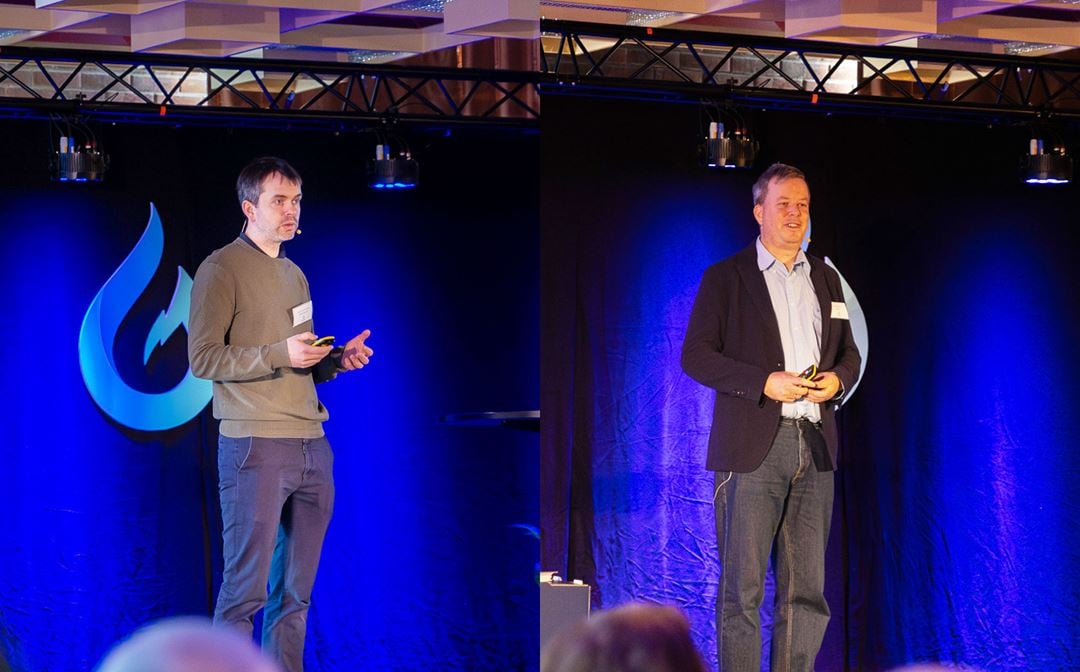The key results and findings from this work have now been compiled into a policy document, which can be used for further work in this area.
Shipping relies heavily on fossil fuels, and is currently responsible for 2% of global CO2 emissions. To align with international climate goals, the International Maritime Organisation (IMO) has mandated a 70% reduction in greenhouse gas emissions from the industry by 2040.
Ammonia, a carbon-free compound, has a high energy density, and can either be a source of energy in itself or an energy carrier for hydrogen. Its history of production and use for other industrial applications means there is a well-established knowledge base on its handling and transportation, which provides a strong foundation for its use as a maritime fuel.
However, there are several challenges that must be addressed before ammonia can be applied as a maritime fuel. Over the past three years, the SINTEF-led MaritimeNH3 project has worked to develop new knowledge to advance ammonia as a cost-efficient, safe and clean alternative to fossil fuels for the maritime industry.
As a result of this work, the project has produced a document that outlines the work performed in the project, presents their key results and findings, and gives recommendations for future work. This document was presented as part of a dedicated side-event at the Maritime Hydrogen Conference on 16 October 2024.
You can read this policy brief in full here
Key findings from MaritimeNH3 – executive summary
Value chains
A working value chain is crucial to realising ammonia’s potential as a maritime fuel. However, establishing this value chain faces regulatory, technical and logistical challenges across the key areas: production, transport and bunkering.
MaritimeNH3 has produced two models that can support the establishment of new value chains by providing a general overview of the associated costs and emissions, in relation to ammonia demand and ammonia transport. A techno-economic assessment was also produced on the feasibility of creating an ammonia-based energy system in Norway, which showed that ammonia production is initially centralised in areas with lower costs, such as Northern Norway, before expanding to meet growing demand in the southern regions.
Key findings from this work include:
- While currently expensive, ammonia costs could reduce significantly as demand grows, potentially reaching 121.5 GWh/day by 2055.
- Ammonia produced from fossil fuels with CCS is a viable short-term solution, but ammonia produced from solely renewable sources will ultimately be necessary to ensure a zero-carbon supply chain.
- In Norway, retrofitted tanker ships are a more cost-effective means of transporting ammonia from production facilities to ports than by road.
Safety
Ammonia is highly toxic even in small concentrations, and the potential of leaks, and the subsequent formation of toxic clouds, presents a significant safety concern. Cold storage (non-pressurised) is generally considered safer than warm storage (pressurized) because the cloud following a warm release is denser, and thus spreads closer to the ground. However, both require careful management to prevent hazardous leaks.
MaritimeNH3 has developed a computational fluid dynamics (CFD) model to predict how ammonia behaves upon an accidental release into humid air from both cold and warm storage. This model can provide valuable data that can inform safety regulations and emergency response planning, particularly in regard to fog formation.
Key findings from this work include:
- Ammonia leaks from cold storage into humid air can reduce the hazardous zone by 30%.
- Visibility should not be considered as an indicator of safety. In humid air, ammonia clouds can appear larger than the actual hazardous area, while in dry air, the danger can spread beyond what is visible.
- While the hazardous zone from a cold release is reduced by fog formation, it is increased for warm releases.
Production
Ammonia is primarily produced through the Haber-Bosch process, which traditionally relies on a synthesis gas of nitrogen and fossil-based hydrogen (grey ammonia), resulting in significant CO2 emissions. Transitioning to low-carbon ammonia production methods is essential to achieve zero-carbon shipping.
MaritimeNH3 has designed a chemical ammonia production process that is independent of synthesis gas production. The project also highlighted the need for smaller, decentralized ammonia plants to reduce transport emissions, though these plants face higher costs compared to larger facilities.
Key findings from this work include
- Producing ammonia via electrolysis is more energy intensive than from natural gas with CO2 capture.
- More efficient electrolysis processes will be key to reducing the associated costs and energy demand of producing ammonia from renewable resources.
- Allowing for increased flexibility in ammonia production, in terms of both plant operation and energy sources, would also reduce costs and increase efficiency.
Engines
Ammonia is promising in its ability to be used in internal combustion engines, but several technical challenges remain. In particular, ammonia has low chemical reactivity, which can lead to difficult ignition, inefficient fuel use, and the formation of undesirable nitrogen compounds.
MaritimeNH3 has conducted an in-depth analysis of the chemical reactivity and emissions of ammonia fuel blends. Partially decomposing the ammonia to produce a fuel consisting of ammonia, nitrogen and hydrogen could address these technical challenges, enabling an easier and more efficient use of ammonia as a fuel without harmful byproducts.
Key findings from this work include
- Even small rates of ammonia decomposition can produce a fuel blend that burns as fast as methane.
- Larger rates of ammonia decomposition can produce a fuel that is almost as combustive as hydrogen.
- Using a hydrogen-fired prechamber is well suited to igniting ammonia mixtures.
Fuel cells
Solid oxide fuel cells (SOFCs) are currently the most efficient technology for converting ammonia to electricity. However, in order for SOFCs to be deployed at scale, more research is needed to mature the technology and reduce the associated costs.
MaritimeNH3 has identified several potential developments for ammonia use in fuel cells. In particular, these relate to mitigating the risk of nitridation, which can reduce the cell’s power efficiency over time as well as the lifetime of the SOFC stacks.
Key findings include:
- Operating the fuel cells at a higher temperature may reduce the risk of nitridation.
- Alternative electrode materials to conventional nickel-based materials used in SOFCs may improve the cell’s ammonia cracking ability and nitridation resistance.
- Pre-decomposing the ammonia into hydrogen and nitrogen may also resist nitridation.
MaritimeNH3 demonstrates that ammonia has significant potential in contributing to the decarbonisation of the maritime sector. However, its realisation depends on a coordinated effort to address the associated technical, economic and safety challenges.
The project’s findings highlight an investment in infrastructure, further R&D efforts, and regulatory frameworks. Policymakers, industry leaders and researchers must work together in order to build a robust ammonia fuel value chain that will support a global transition to zero-emission shipping.


